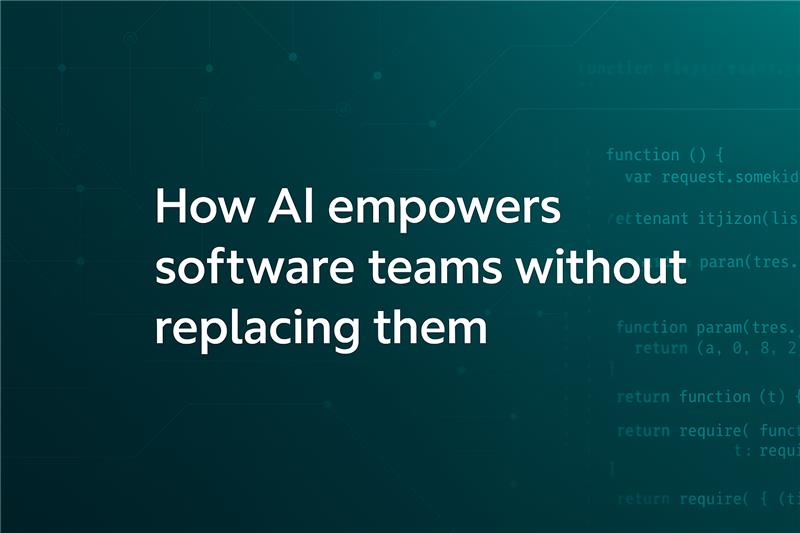Breaking the Myth: How AI in SDLC Empowers, Not Replaces, Teams

Introduction
Whenever a new technology emerges, it’s often met with the same fear: “Will this replace my job?”
With the rise of AI in software development, that question is louder than ever. Many assume that AI automation will eliminate developer and tester roles. The truth is in the Software Development Life Cycle (SDLC), AI isn’t here to replace people. It’s here to empower them.
Sanciti AI is designed to prove this point.
As a full-service SDLC automation framework, it uses AI software engineering and AI product development to remove repetitive, time-consuming work so developers, testers, and project managers can focus on high-value innovation.
The Fear: AI Replacing Human Roles
In the past, automation tools have replaced certain manual tasks in manufacturing, logistics, and customer service. It’s natural to assume AI will do the same in software development.
The concern is that if AI can generate code, test applications, and deploy software, the need for human developers will shrink.
But software engineering is not just typing code - it’s about solving business problems, designing solutions, ensuring security, and adapting systems to real-world needs. AI can support those activities, but it can’t replace the human creativity and judgment they require.
The Reality: AI as an Enabler, Not a Replacement
Sanciti AI is built to streamline and accelerate every stage of the SDLC without removing the human decision-maker from the loop.
Here’s how it complements, not replaces, the team:
Automating Repetitive Tasks
- Generates and validates test cases automatically, reducing QA effort by up to 40%.
- Handles static and dynamic analysis so developers spend less time hunting bugs.
- Refactors legacy code while preserving business logic.
Humans still decide what to build Sanciti AI just speeds up how it’s built.
Boosting Developer Productivity
With built-in AI prompt engineering and AI code assistance, Sanciti AI:
- Cuts peer review time by 35% through AI-assisted review suggestions.
- Reduces production bugs by 20% with proactive code quality checks.
- Supports 30+ technologies, so teams don’t waste time switching between tools.
This means developers can focus on architecture, feature innovation, and problem-solving not repetitive syntax checks.
Strengthening Security Without More Overhead
Security teams are often stretched thin. Sanciti AI:
- Identifies vulnerabilities before deployment.
- Ensures compliance with ADA, HIPAA, OWASP, and NIST standards.
- Embeds security in every stage of the SDLC so teams can focus on higher-level risk strategy.
Why AI in SDLC Expands Opportunities
Instead of shrinking software teams, AI adoption often creates opportunities:
- Faster delivery: means more projects can run in parallel.
- Lower maintenance costs: free budget for new initiatives.
- Improved quality: reduces firefighting, giving developers time to innovate.
With AI handling the routine work, teams can scale their impact delivering more value to customers and stakeholders.
Sanciti AI’s Role in the Future of Work
By embedding AI automation into the SDLC, Sanciti AI:
- Accelerates deployment cycles by 30–50%.
- Improves time-to-market by 25%.
- Reduces technical debt, making development more sustainable.
- Enhances collaboration between developers, testers, and operations teams.
It’s not about replacing roles it’s about evolving them. In an AI-augmented SDLC, developers become solution architects, testers become quality strategists, and project managers become innovation enablers.
The Takeaway
The myth that “AI will take developer jobs” misses the real story. In the SDLC, AI is a force multiplier, not a replacement.
Sanciti AI shows how the right AI framework can:
- Eliminate repetitive work.
- Boost productivity and creativity.
- Improve security and code quality.
- Enable faster, more cost-effective delivery without reducing team size.
The future of software development isn’t AI versus humans it’s AI with humans, building better software together.